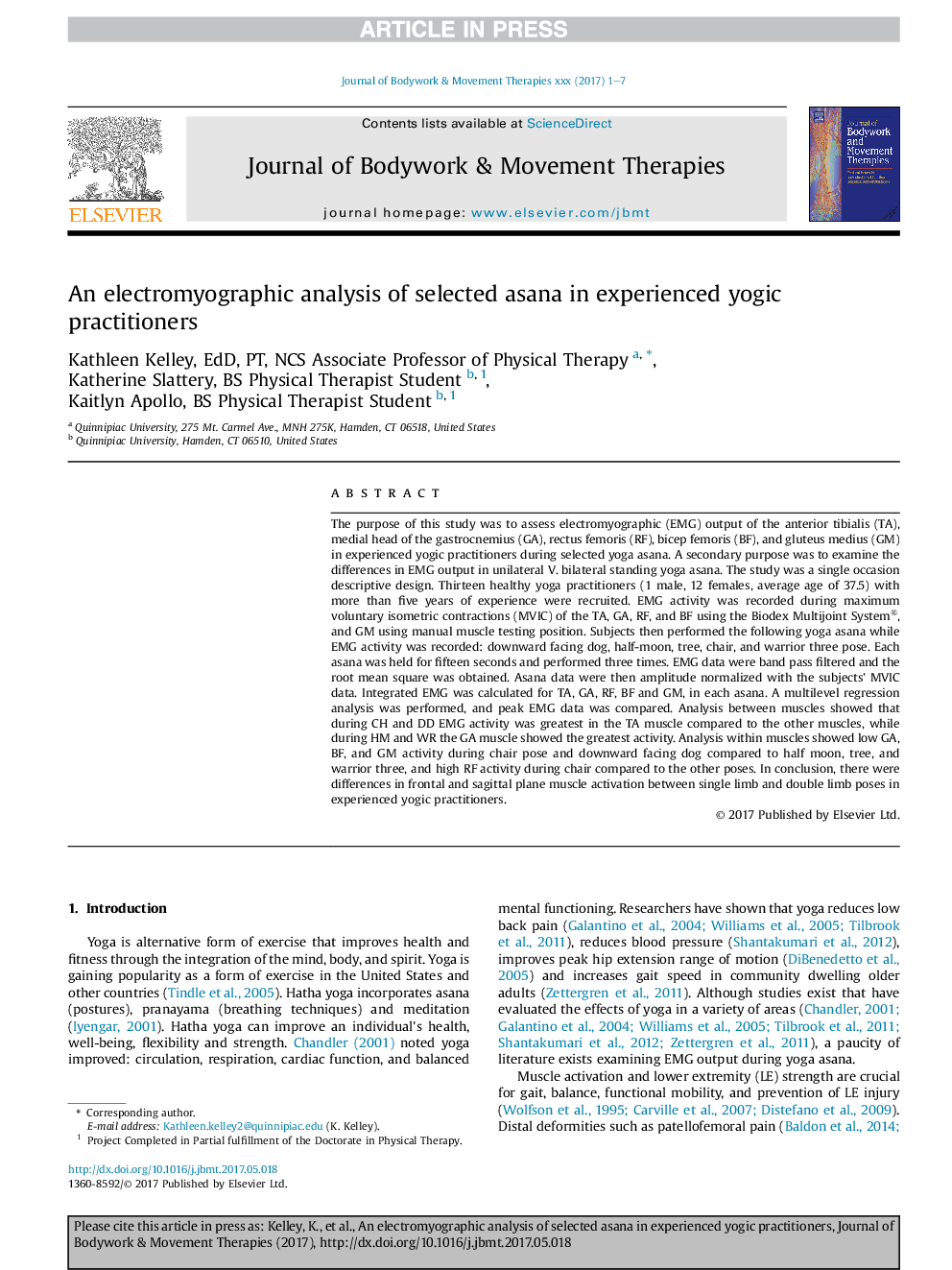| کد مقاله | کد نشریه | سال انتشار | مقاله انگلیسی | نسخه تمام متن |
|---|---|---|---|---|
| 8559336 | 1563035 | 2018 | 7 صفحه PDF | دانلود رایگان |
عنوان انگلیسی مقاله ISI
An electromyographic analysis of selected asana in experienced yogic practitioners
ترجمه فارسی عنوان
تجزیه و تحلیل الکترومیوگرافی انتخاب آسانا در تمرینکنندگان با تجربه یوگا
دانلود مقاله + سفارش ترجمه
دانلود مقاله ISI انگلیسی
رایگان برای ایرانیان
موضوعات مرتبط
علوم پزشکی و سلامت
پزشکی و دندانپزشکی
طب مکمل و جایگزین
چکیده انگلیسی
The purpose of this study was to assess electromyographic (EMG) output of the anterior tibialis (TA), medial head of the gastrocnemius (GA), rectus femoris (RF), bicep femoris (BF), and gluteus medius (GM) in experienced yogic practitioners during selected yoga asana. A secondary purpose was to examine the differences in EMG output in unilateral V. bilateral standing yoga asana. The study was a single occasion descriptive design. Thirteen healthy yoga practitioners (1 male, 12 females, average age of 37.5) with more than five years of experience were recruited. EMG activity was recorded during maximum voluntary isometric contractions (MVIC) of the TA, GA, RF, and BF using the Biodex Multijoint System®, and GM using manual muscle testing position. Subjects then performed the following yoga asana while EMG activity was recorded: downward facing dog, half-moon, tree, chair, and warrior three pose. Each asana was held for fifteen seconds and performed three times. EMG data were band pass filtered and the root mean square was obtained. Asana data were then amplitude normalized with the subjects' MVIC data. Integrated EMG was calculated for TA, GA, RF, BF and GM, in each asana. A multilevel regression analysis was performed, and peak EMG data was compared. Analysis between muscles showed that during CH and DD EMG activity was greatest in the TA muscle compared to the other muscles, while during HM and WR the GA muscle showed the greatest activity. Analysis within muscles showed low GA, BF, and GM activity during chair pose and downward facing dog compared to half moon, tree, and warrior three, and high RF activity during chair compared to the other poses. In conclusion, there were differences in frontal and sagittal plane muscle activation between single limb and double limb poses in experienced yogic practitioners.
ناشر
Database: Elsevier - ScienceDirect (ساینس دایرکت)
Journal: Journal of Bodywork and Movement Therapies - Volume 22, Issue 1, January 2018, Pages 152-158
Journal: Journal of Bodywork and Movement Therapies - Volume 22, Issue 1, January 2018, Pages 152-158
نویسندگان
Kathleen (Associate Professor of Physical Therapy), Katherine (Physical Therapist Student), Kaitlyn (Physical Therapist Student),
